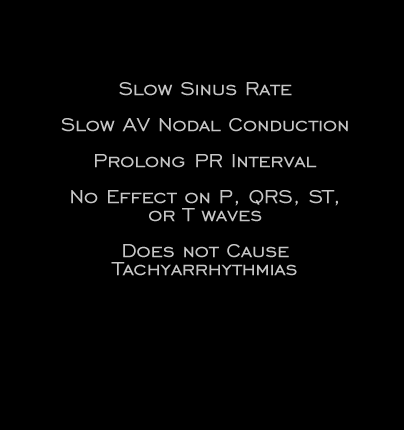
In clinically applicable doses, the beta-adrenergic blocking agents will slow sinus rate and increase the PR interval in patients in sinus rhythm and slow the ventricular rate in patients with atrial fibrillation and flutter. However, these agents have little effect on the electrophysiologic properties of atrial or ventricular cells. Thus, they do not cause changes in P wave or QRS duration or morphology and they do not affect the ST segment or T wave, In addition, they are rarely effective in the management of ventricular arrhythmias with the exception of the catecholaminergic ventricular tachycardias such as those that are exercise induced and those originating in the right ventricular outflow tract since these arrhythmias are most often associated with an increase in sympathetic stimulation and can often be induced by the administration of a beta-adrenergic agonist such as isoproterenol.
